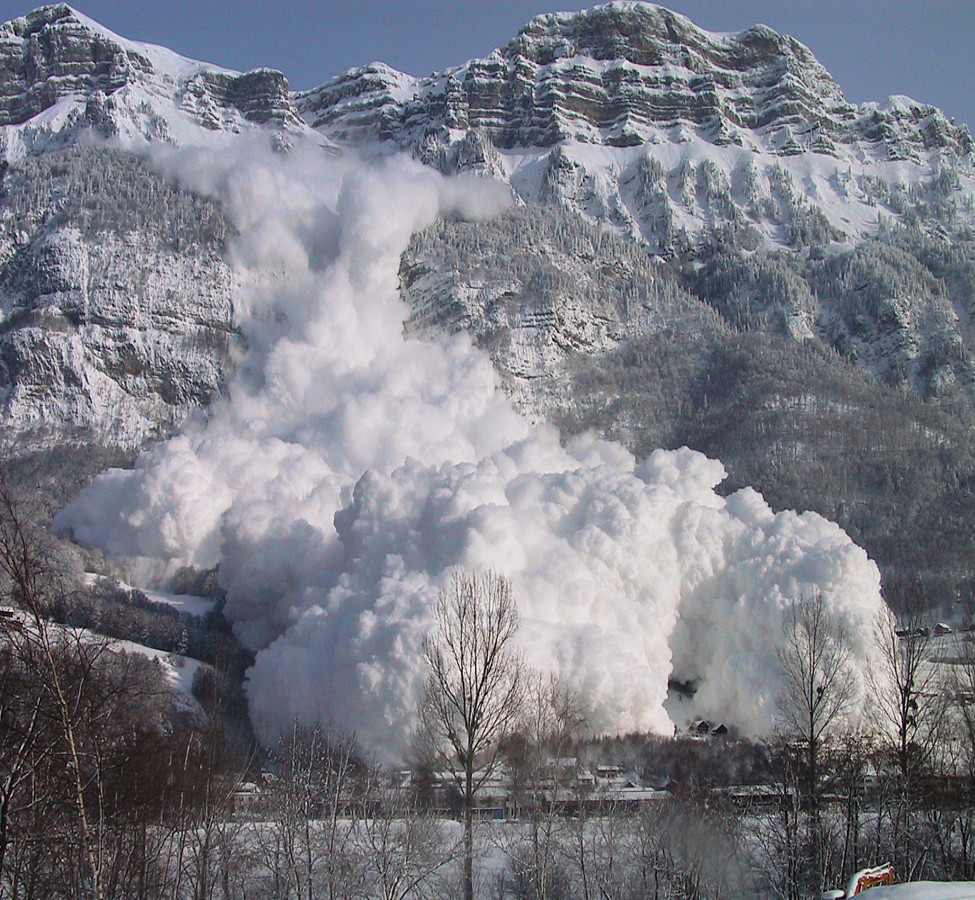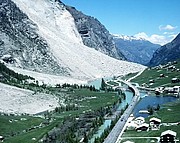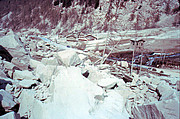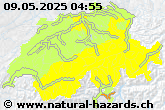How is a rock avalanche triggered?
The occurrence of a rock avalanche depends on topographic conditions, the system of fractures and joints and the type and conditions of the rock layers underneath. As an example, a deep-seated rockslide developed into the famous Goldau rock avalanche (1806, Central Switzerland). This initial mass moved on an inclined bedding plane. The Monte Zandila (Val Pola, Valtellina, Italy 1987) rock avalanche occurred on a steep joint plane.
The movement of rock material depends of topography, the fragmentation of the whole mass and the interaction between the individual boulders. The particles can be pulverized or even melted within the moving mass. A rock avalanche can travel for several kilometres and reaches velocities of 40 m/s (> 140 km/h). On the opposite slope of a valley they can travel far uphill. The mass of a rock avalanche often blocks the valley bottom thus damming creeks and rivers. The sudden outburst of the dammed water results in catastrophic flooding of the downstream areas.
What type of damage occurs?
It is the huge volume which causes most of destruction. The landscape is dramatically altered in the starting zone as well as in the extended accumulation area. In some cases major secondary processes are triggered, for instance flash floods, when the masses travel into a lake as it was the case in the Valtellina in 1987 or, even more destructive, in Vajont in 1963.
In general, rock avalanches and similar events have precursors. Increased block fall occurs days and weeks prior to the main event. Preparedness measures can be implemented (monitoring system, evacuation plans) if the population is vigilant and the increased activity is reported to the authorities.
back





